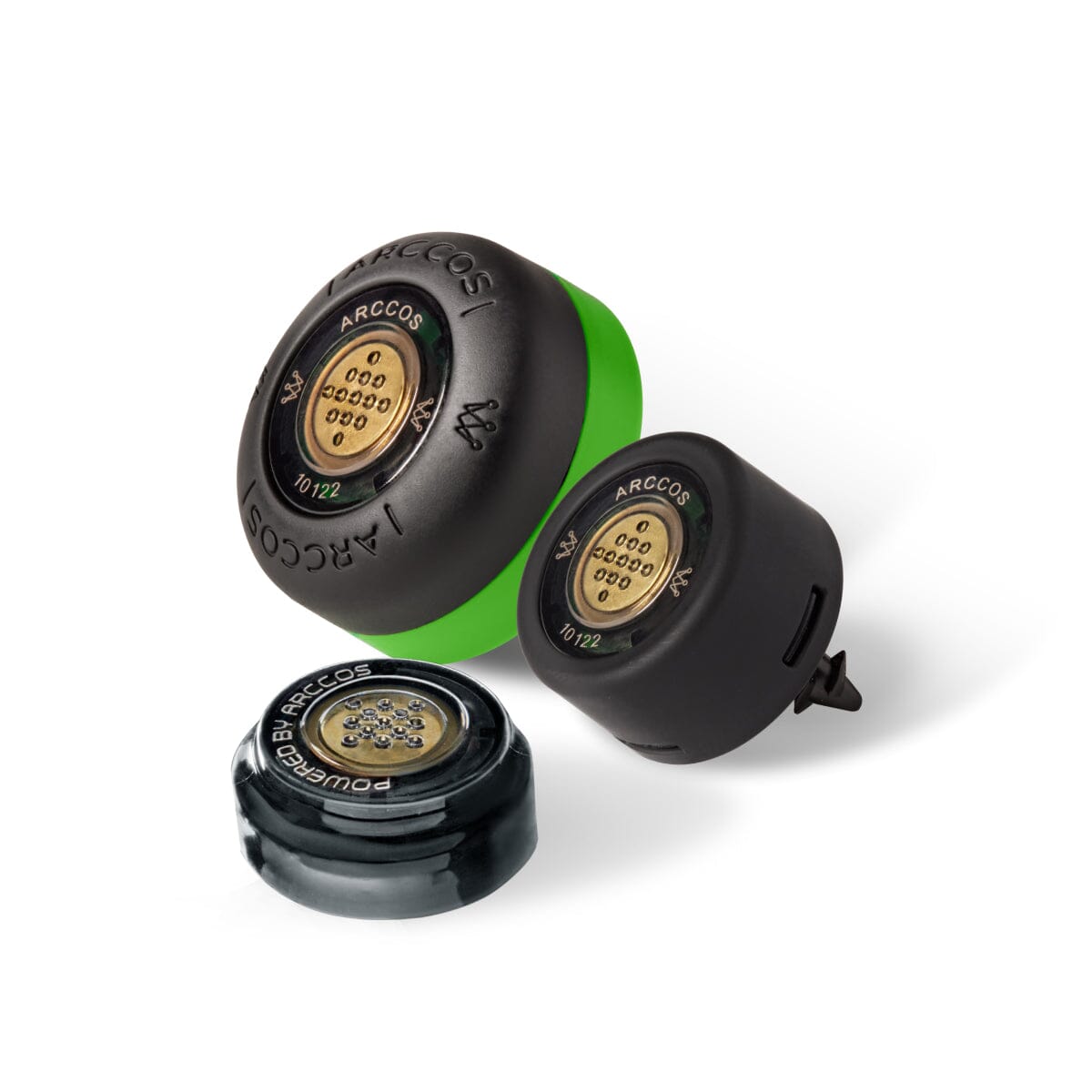
Like many avid golfers, I’m a numbers guy. I like knowing how far I’m hitting my tee shots, how short I’m leaving my approaches, and what my success rate is with 10-foot putts. And if I could ever unearth my accuracy tendencies with each club, I’d be able to maximize practice time at the range.
But to know those numbers, I need to have some way of collecting all of this data on the course, as I take each swing.
Enter the Arccos Golf game tracking system. It consists of a free smartphone (or Apple Watch) app plus 14 sensors that each self-screw into the little hole at the butt end of each club grip. Once you attach the sensors and turn on the app, you sync them with each other via Bluetooth just once. The process takes less than five minutes. And from then on, you’re good to go forever.
Arrive at a golf course — 40,000+ course maps are pre-loaded into the app — then simply turn on the app and your phone’s Bluetooth. The app will quickly recognize the exact spot you’re standing on any hole, and recognize the sensor on each club and which club it is. Ah, the magic of GPS and technology. Then you just play golf.
From there, the system recognizes which club you’re hitting. Say you’ve teed off. Once you arrive at your ball and take your next swing, the app has recorded via GPS exactly how many yards you hit your drive and maps the exact spot you hit it to. And it’s already doing the same for your next shot. All the while, the app acts as a GPS system, displaying how many yards you have to the front, center and back of the green.
I have to admit that I wasn’t a believer before I took it out for a test drive. But as I was playing my first round with the system, it took only a few holes until I was convinced Arccos would help me improve my game. For instance, I noticed that my first three chip shots of the day all went past the pin. That quickly taught me that I wasn’t getting the kind of backspin I was expecting, and that perhaps I should choose a landing spot short of the flagstick for my next pitch, so the ball could cozy up to the hole. And in fact, I did do this at the next opportunity, and nearly holed the shot.
Reviewing my stats after the round, I also learned that even though I have a natural right-to-left draw on my tee shots, I still landed 38.5 percent of them on the right side of the fairway. This means I was aiming too far right on most holes. Next round, I vow to adjust my alignment.
Armed with this kind of information is invaluable: I’m able to fine-tune my game and my approach to which club to hit from specific distances, know when to lay off a full wedge swing around the green, and correct how often I’m choosing the wrong tool for any given shot. And this, in turn, will help lower my scores.
Arccos isn’t perfect yet — my system had trouble gauging when exactly I was taking putts. Once, I gave my buddy his gimme and tapped his ball back to him. The system counted that tap toward my score. But I was easily able to reverse that.
If you want to open up your eyes as to what’s really going on with your golf game, Arccos is well worth the money.
Original article published here.






Share:
Golf News Net: Arccos Golf Review
Billy Horschel: The people's champion